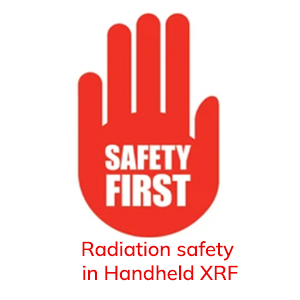Demystifying X-Ray Fluorescence Spectrometry for Beginners: A Beginner’s Guide
X-Ray Fluorescence Spectrometry (XRF) is an invaluable and widely employed analytical technique, widely employed for identifying elemental composition of various samples ranging from solid, liquid and gaseous substances. As a non-destructive and accurate technique it has found application across numerous fields such as materials science, environmental analysis, archaeology geology and even forensics.
At this beginner’s guide to XRF spectrometry, we will present an in-depth introduction that covers basic principles, instrumentation, sample preparation and applications of this form of analysis. By the time this article concludes, you should have an excellent grasp on how it works and can use XRF to solve analytical issues in your field of interest.
Basic Principles of XRF Spectrometry
XRF spectrometry operates under an uncomplicated principle. When exposed to high-energy X-rays, samples become excited atoms which emit characteristic X-rays at specific wavelengths, which can then be measured to identify their elemental composition.
Energy of emitted X-rays is directly proportional to atomic number of emitting element, making XRF an invaluable method for identifying specific elements within samples. Furthermore, intensity of the emitted X-rays relates to concentration level making XRF both qualitative and quantitative methods of analysis.
Instrumentation for XRF Spectrometry
XRF spectrometry requires specialized instrumentation in order to generate and detect the characteristic X-ray emissions emitted by samples. There are two primary types of XRF instruments; energy-dispersive (EDXRF) and wavelength-dispersive (WDXRF), each offering their own distinct advantages and limitations.
EDXRF spectrometers utilize an energy-sensitive detector to measure the energy emitted by X-rays, enabling rapid analysis of various elements and satisfying routine quality control applications. On the other hand, WDXRF spectrometers use a diffraction crystal to separate wavelengths emitted by these X-rays, giving more accurate measurements of trace element concentrations in complex matrixes.
Sample Preparation for XRF Spectrometry
Sample preparation is a key aspect of XRF spectrometry, as its accuracy and precision depend on its quality. Solid samples may require grinding into fine powder before compressing it into thin pellets for analysis; this ensures uniform distribution of elements as well as an increased signal-to-background ratio during testing.
Liquid samples must be processed prior to analysis by diluting with an appropriate solvent or immobilizing it on suitable support material, while gaseous samples can be directly introduced into an XRF instrument via special accessories that facilitate direct analysis.
Applications of XRF Spectrometry
XRF spectrometry finds many applications across many fields, due to its non-destructive nature, high accuracy and rapid analysis capabilities. Among its uses in materials science are determining elemental composition of alloys, ceramics and polymers as well as monitoring catalysts and additives used in industrial processes.
Environmental analysis makes use of XRF to detect and quantify trace elements present in soil, sediments and water samples for assessment of potential environmental hazards. Archaeology uses it to investigate artifacts like pottery and metal objects to trace their history of manufacture as well as origin.
Geologists use XRF to understand the elemental composition of rocks, minerals and ores for mineral resource exploration and exploitation purposes. In forensics investigations, gunshot residue analysis as well as paint chip testing is done using XRF; helping criminal investigators solve crimes quicker.
X-ray Fluorescence Spectrometry is an invaluable analytical technique that allows scientists to accurately and precisely ascertain the elemental composition of various samples with high accuracy and precision. As a non-destructive technique, it has found applications across fields like materials science, environmental analysis, archaeology, geology and forensics – so using this beginner’s guide you will be well equipped to explore XRF spectrometry in whatever area interests you most!
